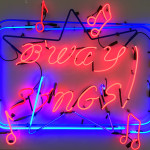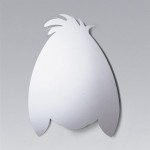Biography
Jeff Koons (born 1955)
Born in York, Pennsylvania; as a teenager he revered Salvador Dalí, to the extent of visiting him at the St. Regis Hotel in New York City. Koons studied painting at the School of the Art Institute of Chicago and the Maryland Institute College of Art. After college, he worked as a Wall Street commodities broker while establishing himself as an artist. He gained recognition in the 1980s and subsequently set up a factory-like studio in a SoHo loft on the corner of Houston and Broadway in New York. It was staffed with over 30 assistants, each assigned to a different aspect of producing his work•in a similar mode to Andy Warhol’s Factory and the studio of Damien Hirst.
Arts journalist Arifa Akbar reported for The Independent that in “an era when artists were not regarded as ‘stars’, Koons went to great lengths to cultivate his public persona by employing an image consultant.” Featuring photographs by Matt Chedgey, Koons placed “advertisements in international art magazines of himself surrounded by the trappings of success” and gave interviews “referring to himself in the third person.”
Koons then moved on to Statuary, the large stainless-steel blowups of toys, followed by the Banality series that culminated in 1988 with Michael Jackson and Bubbles, a life-size gold-leaf plated statue of the sitting singer cuddling Bubbles, his pet chimpanzee. Three years later, it sold at Sotheby’s New York for $5.6 million and is now in the permanent collection of the San Francisco Museum of Modern Art. The statue was included in a 2004 retrospective at the Astrup Fearnley Museum of Modern Art in Oslo which traveled a year later to the Helsinki City Art Museum. It also featured in his second retrospective at the Museum of Contemporary Art, Chicago, in 2008..
In 2001, he undertook a series of paintings titled, Easyfun-Ethereal, using a collage approach that combined bikinis (with the bodies removed), food, and landscapes painted under his supervision by assistants.
Other large sculptures from his Celebration series were exhibited at the Metropolitan Museum of Art in New York in 2008.
Considered as his first retrospective in France, the 2008 exhibition of seventeen Koons sculptures at the Chateau de Versailles also marked the first ambitious display of a contemporary American artist organized by the chateau. The New York Times reported that “several dozen people demonstrated outside the palace gates” in a protest arranged by a little-known, right-wing group dedicated to French artistic purity.
Among curators and art collectors and others in the art world Koons’s work is labeled as Neo-pop or Post-Pop as part of an 80s movement in reaction to the pared-down art of Minimalism and Conceptualism in the previous decade. Koons resists such comments: “A viewer might at first see irony in my work… but I see none at all. Irony causes too much critical contemplation.”[citation needed] Koon’s crucial point is to reject any hidden meaning in his artwork. The meaning is only what one perceives at first glance; there is no gap between what the work is in itself and what is perceived.[citation needed]
He has caused controversy by the elevation of unashamed kitsch into the high art arena, exploiting more throwaway subjects than, for example, Warhol’s soup cans. His work Balloon Dog (1994-2000) is based on balloons twisted into shape to make a toy dog.
Mark Stevens of The New Republic dismissed him as a “decadent artist [who] lacks the imaginative will to do more than trivialize and italicise his themes and the tradition in which he works… He is another of those who serve the tacky rich.” Michael Kimmelman of The New York Times saw “one last, pathetic gasp of the sort of self-promoting hype and sensationalism that characterized the worst of the 1980s” and called Koons’s work “artificial,” “cheap” and “unabashedly cynical.”
In an article comparing the contemporary art scene with show business, renowned critic Robert Hughes wrote that Koons is “an extreme and self-satisfied manifestation of the sanctimony that attaches to big bucks. Koons really does think he’s Michelangelo and is not shy to say so. The significant thing is that there are collectors, especially in America, who believe it. He has the slimy assurance, the gross patter about transcendence through art, of a blow-dried Baptist selling swamp acres in Florida. And the result is that you can’t imagine America’s singularly depraved culture without him.”
To the question – “Is it important that your work be famous?” – Koons replied: “There’s a difference between being famous and being significant. I’m interested in [my work’s] significance • anything that can enrich our lives and make them vaster • but I’m really not interested in the idea of fame for fame’s sake.”
He has influenced younger artists such as Damien Hirst (e.g. in Hirst’s Hymn, an eighteen-foot version of a fourteen-inch anatomical toy), and Mona Hatoum.[citation needed] In turn, his extreme enlargement of mundane objects owes a debt to Claes Oldenburg and Coosje van Bruggen.[citation needed] Much of his work was also influenced by artists working in Chicago during his study at the Art Institute, including Jim Nutt, Ed Paschke and H. C. Westermann.
In 2005, he was elected as a Fellow to the American Academy of Arts and Sciences.

 BWAY SINGS
BWAY SINGS
 Donkey
Donkey